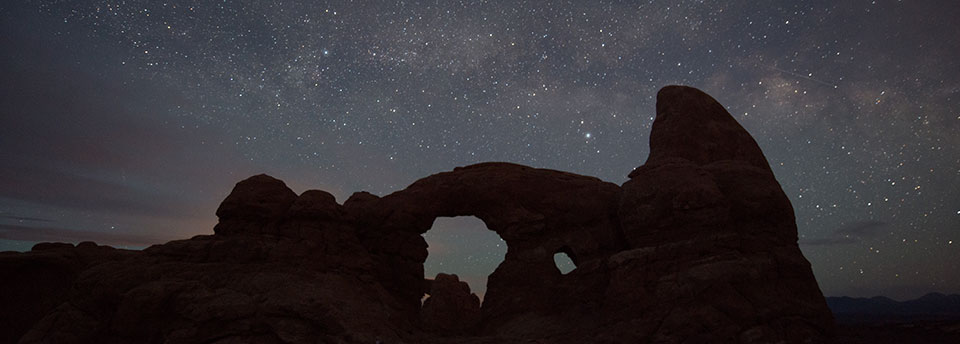News Release

NPS Photo
|
Subscribe
|
Contact: Kate Cannon, 435-719-2101
Contact: Nathan Ament, 435-719-2227
MOAB, UT— The National Park Service and the International Dark-Sky Association are pleased to announce Arches National Park as an International Dark Sky Park, a place recognized for its quality night skies and a commitment to protecting and sharing natural darkness.
Park rangers from around the Colorado Plateau will host a ceremony and star party to celebrate on Sept. 21, 2019, at the newly completed Panorama Point stargazing area within the park. More details on this event will be available soon.
Rangers have led regular astronomy programs and special events in the park since at least 2012. They regularly work with staff from nearby dark sky parks to offer Moab-area visitors an opportunity to explore the night sky. International dark sky park certification gives Arches National Park support to grow these programs and creates economic opportunities for neighboring communities through astronomy-based tourism.
“I am grateful that the International Dark-Sky Association has recognized the southeast Utah parks’ efforts to share spectacular dark skies with the public,” said Kate Cannon, Southeast Utah Group superintendent. “The certification for Arches is the culmination of more than 10 years’ effort to preserve and share dark night skies in southeast Utah.”
Arches is one of four parks included in the National Park Service’s Southeast Utah Group. The other parks, Canyonlands National Park, and Hovenweep and Natural Bridges national monuments, have all received international dark sky park certifications in recent years. Natural Bridges National Monument was certified as the world’s first international dark sky park in 2007. All four parks work together with neighboring organizations, businesses, communities, and land managers to showcase some of the darkest skies in the United States.
The certification does not carry legal or regulatory authority. Instead, it demonstrates a commitment by parks to improve night skies through the use of more energy-efficient, sustainable lighting. Certification also reaffirms the park’s commitment to educate the public and nearby communities about the importance of good lighting and opportunities to work together toward common goals.
“The work that was done at Arches National Park was a team effort including National Park Service employees, the Friends of Arches and Canyonlands National Parks, and the City of Moab and Grand County,” said Cannon. “It was a true team effort.”
In recent years, Arches staff have revamped and replaced light fixtures with fully-shielded bulbs. Nearly 100 percent of the park’s lights are now “night-sky friendly,” which means they follow the recommendations by the International Dark Sky Association to minimize glare as well as the amount of blue light emitted at night.
Park staff also worked closely with the Colorado Dark Sky Cooperative and Moab Dark Skies to engage the city of Moab and Grand County in preserving and enjoying naturally dark skies.
Arches was first established as a national monument in 1929 for its “gigantic arches, natural bridges, windows, spires, balanced rocks, and other unique wind-worn sandstone formations….” Today’s visitors come from all over the world to explore the world’s largest concentration of natural stone arches, as well as spectacular night skies they might not see from home.
The International Dark Sky Places Program was founded in 2001 to encourage communities, parks, and protected areas around the world to preserve and protect dark sites through responsible lighting polices and public education. Arches National Park now joins more than 100 locations that have followed a rigorous application process that demonstrates robust community support for dark sky certification.
Frequently Asked Questions about International Dark Sky Park Certification
For more information about Southeast Utah Group parks, visit our websites:
Arches National Park
Canyonlands National Park
Hovenweep National Monument
Natural Bridges National Monument
Last updated: April 29, 2025
